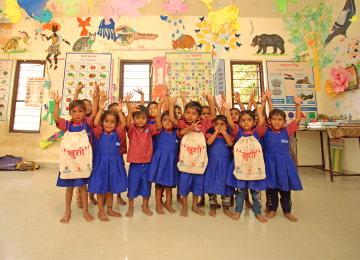Stakeholder Engagement
Stakeholder identification and analysis at HZL sites, aligned with TS14, is carried out across all project stages to assess impacts and risks. It involves mapping affected groups, identifying vulnerable populations, and engaging local leaders. A Stakeholder Engagement Plan (SEP) defines communication levels and is reviewed annually. Engagement methods are tailored, identification is continuously updated, representatives are appointed, and implementation is led by the Community Development Manager with departmental collaboration.
OUR STAKEHOLDERS


EMPLOYEE & BUSINESS PARTNERS EMPLOYEES
This engagement involves improving employees’ experience, monitoring organisational health and enhancing the quality of life at the workplace. It further encompasses motivating employees to perform above and beyond their roles and improve their levels of trust and loyalty within the Company to enable increased employee retention, performance and innovation. Annual surveys, interactions with senior leadership, etc. are some of the ways in which the Company seeks to promote employee engagement.


CUSTOMERS
An understanding of customers’ needs helps to determine product quality and pricing. Customer needs and demands serve to guide product innovation and development in the Company. Reduction in environmental and social impacts of our products helps customers meet their sustainability goals.


SUPPLIERS/BUSINESS PARTNERS
The contribution of business partners is critical to our business and ensures operational efficiency through timely supplies and efficient logistics. We also depend on our suppliers to meet our objectives of sustainability and responsible sourcing, which play a significant role in promoting the safety of workers and the workplace.


COMMUNITIES
Community engagement leads to an understanding of vital social factors for sustainable community development. Caring for the community contributes to the Company’s overall business growth and sustainability, led by reduction in any negative impact of business on environment or our people. Community engagement also serves to improve the economic well-being and quality of life. Discussions with the community aid the Company to finalise initiatives leading to overall community growth and development.
Communities are encouraged to express their views on operational risks, environmental and social impacts, and cultural heritage concerns through proactive engagement mechanisms such as field visits, group discussions, and grievance meetings. These inputs are incorporated into project planning and decision-making. HZL also maintains accountability by reporting back to stakeholders through weekly internal reviews, annual external reports, and community meetings, fostering trust and transparency throughout the project lifecycle. An annual perception study is conducted by an independent third party to systematically gather feedback and assess stakeholder perceptions regarding the organisation and its social development projects.


GOVERNMENT
Business contributes to nation-building through taxes, royalties and employment creation. Engagement with the government, be it alignment with the government’s policy vision or in a partnership is essential for implementation of our sustainable business operations that creates a multiplier impact by generating key opportunities that positively impact the nation. Working in alignment with the government entails meeting the compliance requirements as per the statutes and policy advocacy on subjects relevant to the Company in its core business of exploration, mining and smelting.


SHAREHOLDERS
Shareholder support and feedback on operations provides continual guidance to the management and serves to keep governance on track. Keeping the Company’s communication channels open with analysts and the investor community serves to connect them with the management. The Company maintains a strong focus on ESG concerns, which are of importance to shareholders too.


NGOs
Onboarding and engaging experts for effective implementation of the Company’s CSR programmes, besides regularly discussing and sharing updates, has served to strengthen the implementation of existing programmes.
Stakeholder Group
Suppliers
Purpose & Scope of Engagement
Engagement Platforms/ Channels
Stakeholder Group
Communities
Employees
Customers
Stakeholder Group
Government & Regulatory Authorities
Employees
Customers
Stakeholder Group
Shareholders, debenture and other security holders
Employees
Customers
Stakeholder Group
Employee & Business Partners Employees
Employees
Customers
Stakeholder Group
Development Organisations
Employees
Customers